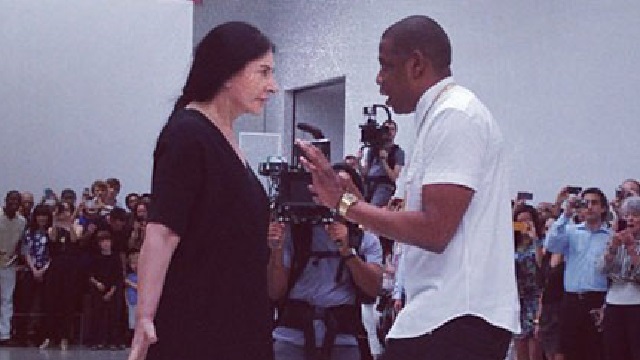The Rat Race of Intimacy

Here is a brilliant column by 11-year old Olympia Nelson on provocative selfie shots on social media. It’s valuable to hear this world described from the vantage point of someone who is actually in it.
Nelson uses a wonderful phrase to summarize the selfie culture: the “sexual rat race.”
It captures a calculating, game-playing, rule-driven, sports-centered hollowness at the heart of some of our most intimate relationships today, both sexual and non-sexual.
The sexy selfies, Nelson says, amount to a competition to climb to the top of the heap of boys’ approval on Facebook, through DIY objectification.
This isn’t connected to what girls feel, or desire, or want, per se. It’s a game. Its object according to Nelson is to amass likes from boys, to out-rat race the girls, but also to collect approval from girls, who will then call you a slut behind your back. (Girls, look out for each other, and don’t trash each other, out of a misguided belief that it will make you popular with boys. This is one of the smartest things you can do in life).
Meanwhile young men have the PUA, or pick up artist, culture. It’s a game, as well, to seduce women.
As with any other competition, the sexual rat race has its rule books. Some of them are, literally, rule books, about how to “snag” a man–your prey–and trick him into marriage, or seduce a woman and trick her into bed.
The New York Times—a few years late to the game—has an article on the hook- up culture on college campuses. This culture isn’t all that new, except that it’s more pervasive and coed now. Young women don’t want “romance” or to get saddled with a relationship. They’re ISO casual sex. “She Can Play That Game Too,” The Times headlines (this assumes, and I would disagree, that men have always wanted to play “that game.” I don’t recall that from my college experience, where a lot of men had and wanted girlfriends or steady lovers).
Women talked about and had hook-ups in my college back in the 1980s. We used that term, “hooking up.” Although I can’t say that I remember vividly or warmly any of those hook-ups now, especially in comparison to other easily recalled moments and relationships. They were pleasant enough, I suppose, for the brief time that they happened, although nothing special, interesting, meaningful, intimate, valuable, memorable, provocative, or unique in my erotic life. Occasionally, they filled me with baffled self-loathing after the fact; occasionally, I secretly wanted more than a hook up, but didn’t know at that young age how to say that, or to get that, or even to be honest with myself about what I wanted; occasionally, they were fleeting, and not freighted with any meta-meaning at all.
I’m critical of the trope of romance, too. I think we’re in a post-romantic age. But I’m a loyal fan of something that exists in between the tired tropes of romance (ugh) and a game. I’d call it intimacy. Or, maybe it’s the humanist idea of being open to other people, and to the possibility that in relationships, there’s a chance to deepen the bond, or to learn something about another person, or to take risks erotically or otherwise that lack of intimacy might preclude. If you’ve read my book and columns you know that I don’t think “real” intimacy requires conventional relationships, or conventional idioms of emotional closeness, per se. But I still think it’s a good thing, and well worth fighting for.
The treatment of intimacy as an encumbrance, a burden, and a drag on the buoyancy of—what? Your summer internship prospects? Your way future career?—is a disquieting notion. One of the major enterprises of life, it seems, is to build attachments and intimacies to other people whether as friends, family, or lovers.
On to another theme: Maybe the sexual rat race explains why porn actors are treated almost as sexual gold standards today. After all, they’ve excelled professionally at the game, so why not model ourselves after them. You can read “How To Do [Inset Sex Act Here] Like a Porn Star!” The sexual achievement is visual, superficial, and mechanical rather than tactile. It leaves nothing to the imagination.
Likewise, those who win the rat race look most like porn actors, which explains some of what Salon writes is the “War on Pubic Hair.” Real humans have pubic hair, but the more you can look like the celluloid or video game version, the hotter you are; the more you can replicate the body dimensions of a plastic Barbie doll or a photo-shopped faux-real image in a magazine, the more you win; the more you can perfect mechanically the porn actor’s technique, the better you are.
Although this standard is asymmetrical. It’s all about women emulating porn actors. If we women expected the same—and demanded the hardness, endurance, and genital girth of male porn actors– we’d be labeled shallow and laughed at. Why are we taking porn seriously, people would say.
The Rat Race of intimacy doesn’t end with college, or sex.
Look at the profound relationship of mother and child. Motherhood is shot through with a judgmental, dog-eat-dog mood of doing it better than the competition, as judged by superficial benchmarks of a child’s “performance.”
And I wonder if friendships are the next relationship to enter the rat race. Already, social media has added a performative, quasi-competitive function to friendship, with its Pavlovian fixation on Likes and the quantity of peer approval elicited for photos and comments.





